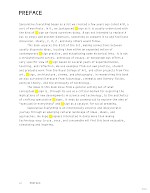Destabilising Canon; redaction as revelation
24 February 2025 — ongoing
We have become intricately intertwined with words and meaning ... But the changing of meaning mostly escapes us. In this ongoing research we are yellowing-out —blacking out has a conotation we will address later—, the de- in design of publications, seminal design publications, that we come across in our research. The gesture aims? to start a conversation about the intent present in the design practice and to trouble the de- prefix burried? in it. We are not merely altering a word; we're reframing the field's self-conception.
It's redaction as revelation.

Victor Papaneks seminal publication: Design for the Real World, Human Ecology and Social Change (1971)
Introduction
Some questions that arrise from these interventions:
* Foregrounding the "sign" in "design"
By erasing "de", we expose the sign within design. This stripping-away reveals what has always been embedded: design as a system of signs, a progressive practice and ideological apparatus.
* Physical deconstruction
Instead of (next to) theorizing about language's instability, we enact is on the cover itself. The erasure of "de" isn't just metaphorical — it's embodied, printed, inked. It's fogging / destabilising / troubling the prefix, refusing to let the word begin unchallenged.
* Visually resisting determinism of "design"
Design implies directionality — from chaos to order, problem to solution, fluid to solid. By blocking the "de" we resist this linearity and claims to progress, clarity and control. We introduce opacity, ambiguity.
* Destabilising Canon
This implies a direct critique of western dominant legacy, introducting fog. It's not vandalising — it's unveiling.
* Trouble reading into noticing
We stumble, pause at the yellow-outs. This moment —of visual, cognitive, operative— interruption is the space of our practice. Design no longer taken for granted as something that is ... but starts becomming.




















